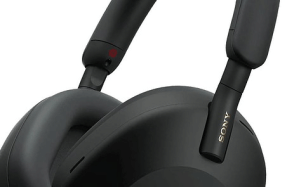Escape from WINDOWS 10

The upcoming launch of Windows 11 is a great opportunity for those frustrated with the Microsoft ecosystem to find a better way. And what better way than Linux? If you’ve just bought a PC with Windows pre-installed or upgraded from an earlier version and decided enough’s enough, or have a family member or friend who’s finally seen the light, this feature is for you.
The easiest way to migrate from Windows is through Mint, a user-friendly Linux distribution (distro) that’s packed with all the features you need, wrapped up in an accessible user interface particularly suited to first-time switchers. You’ll find the latest version at www.linuxmint.com. We’ll be using version 17.3 to step you through the process, but most of the guide can easily be adapted to Ubuntu (either 15.10 or 14.04.3 LTS) if you’d prefer.
The process is straightforward: first, you’ll back up your hard drive in its current state, so you know you can always roll back to the beginning of the process if necessary without data loss. Then we’ll reveal how to install Mint alongside your existing Windows 10 installation, so you still have access to your old system while you make the transition. We’ll sort out any dual-boot issues you have, plus expose the truth behind some myths that put people off switching in the first place.
We’ll also take you on a tour of the Cinnamon desktop, reveal the basics you need to get started, plus show you how to switch to it if you’ve installed Ubuntu. Last, but by no means least, we’ll show you how to install apps on your new system, find open-source alternatives to the key programs you’ve been using previously and even reveal how to get some Windows programs running with the help of a clever tool called Wine.
Everything you need to make the switch is here, so now there’s no excuse. Read on to discover how to escape Windows and transform your computing experience.
Get backed up
Don’t even think about installing Linux until you’re backed up...
There’s nothing worse than attempting to upgrade or install a new operating system only for something to go wrong. You can replace that gut-clenching feeling with one of minor irritation by making sure you’ve backed up your Windows installation (or just your data) before you begin, this will enable you to easily roll back to a working state if something goes awry.
There are numerous backup tools for the job, but we’ve plumped for Redo Backup and Recovery, which works beautifully with both Windows and Linux installations – go to www.redobackup.org/ download.php and follow the instructions to download the Redo Backup live CD in ISO format. Burning it to disc is simple: pop a blank disc in the drive, browse to the ISO file in Windows 10, right-click it and choose ‘Burn disc image’. If you’d rather create a bootable USB stick, make sure it’s been formatted as FAT32, then download and run the latest version of Unetbootin from http://sourceforge.net/projects/ unetbootin – select the Diskimage option, click ‘…’ to select your ISO file and verify the correct USB drive has been selected before clicking ‘OK’.
Before proceeding further, you should also create a Windows recovery disc or flash drive if you don’t already have Windows 10 installation media – you may need this should you run into problems with dual-booting Ubuntu and Windows. Type ‘recovery’ into the Windows 10 Search bar and choose ‘Create a recovery drive’ to get started.
Once your recovery and Redo Backup media has been created, reboot your PC with the Redo Backup drive inserted, then tap the option at startup to select your boot device (often F11 or F12). Select the drive and then choose ‘Start Redo Backup’ when prompted. If you end up back at the boot choice menu then it’s likely you’re trying to boot from a newer PC in UEFI rather than BIOS mode (see the Roll back and Start Again box, below for help resolving this issue). If you’re unable to get Redo Backup working in any shape or form, try backing up using the built-in Windows disk imaging tool instead, which is part of the Backup and Restore tool.
Back up with Redo
When the main screen appears, click the ‘Backup’ button to get started. Select the drive Windows is currently installed on (typically drive
You’re reading a preview, subscribe to read more.
Start your free 30 days





